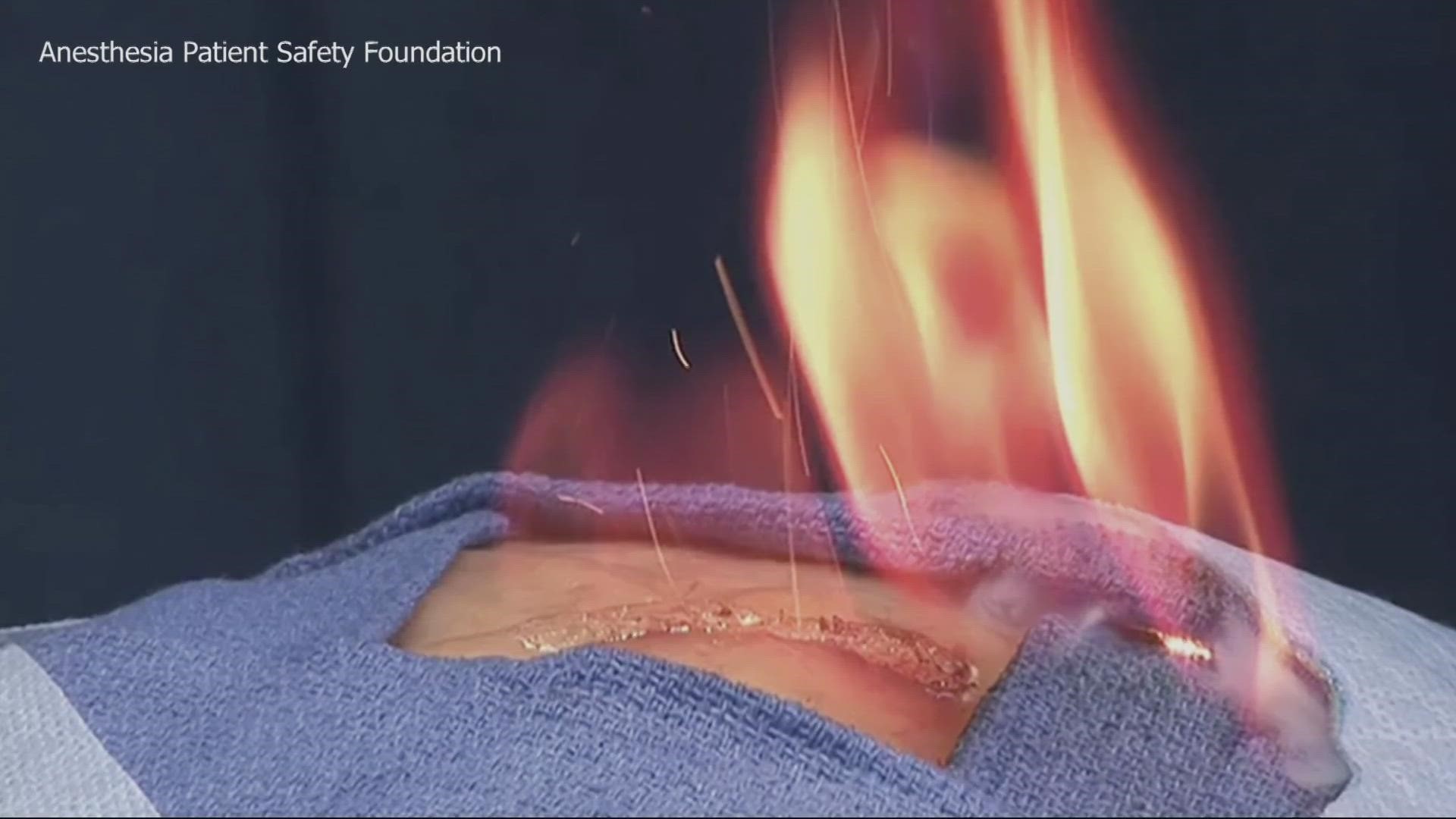PORTLAND, Ore. — A fire broke out in an operating room at Oregon Health and Science University at some point in December, causing minor injuries to a patient, the hospital confirmed this week.
The fire was quickly extinguished, according to OHSU, but the hospital declined to provide any other specific details about the incident, citing HIPAA patient privacy rules.
The incident prompted OHSU to conduct an internal review of what went wrong, according to an OHSU spokeswoman. Federal investigators from the Centers for Medicare & Medicaid Services (CMS) also investigated the incident several weeks after it happened after receiving an anonymous tip.
According to an OHSU spokeswoman, the federal investigators "assigned the site 'immediate jeopardy' status," which required immediate action to fix the problems.
OHSU said it created a corrective action plan that included clarifying its policies for the use of high-flow oxygen during preparation for surgical procedures, as well as instructions for using cautery equipment and an antiseptic called ChloraPrep.
Part of the plan included changing the markings on high-flow oxygen devices so it's immediately clear when they're in use. Following the fire, OHSU also replaced the type of cauterizing tool used around high-flow oxygen.
CMS approved the plan Monday, the hospital said. A hospital spokeswoman would not elaborate about how exactly the fire started and hospital executives declined interview requests, citing patient privacy rules.
"At OHSU, the safety of our patients and members is our top priority, and it is deeply concerning to all involved any time there is risk of harm," the hospital said in a statement. "OHSU actively works to prevent any instance in which patient or member safety may be compromised through both proactive and responsive measures, including reporting systems and ongoing improvement initiatives."
Surgical fires
Warning models for a surgical fire frequently identify three contributing factors: an oxygen source, a source of heat or fire, and fuel to keep the fire going.
Brett Morgan, a senior director for the American Association of Nursing Anesthesiologists, told KGW that the surgical community takes this high risk seriously, and breakdowns in communication are often to blame.
"It’s kind of a prime situation in surgery because you’re oftentimes using supplemental oxygen when a patient is under anesthesia, and a lot of surgical approaches use cautery or create sparks," Morgan said.
Barbara Malanga, an investigator for the nonprofit ECRI - the Emergency Care Research Institute - agreed that communication between medical professionals is key to preventing fires.
“Let’s face it, the ignition source is handled by the surgeon, usually, the oxidizer or oxygen is handled by the anesthesiologist, and the nurse is handling the drapes and fuels and stuff," Malanga told KGW. "So that team all has to work together to prevent this risk.”
However, both Morgan and Malanga said surgical fires are very uncommon, calling them "catastrophic but rare events."
A 2010 news release from Portland Fire & Rescue defined surgical fires as fires that ignite in or around a patient during surgery. They can spread quickly due to open oxygen sources in the room, and can cause serious injury to patients. A 2017 story on Good Morning America also examined the phenomenon.
A 2018 news release from the Institute for Safe Medical Practices (ISMP) explained that ignition sources for the fires can be anything that produces heat or an electrical charge, including electrosurgical units, cautery devices, lasers, defibrillators or even static electricity.
Linens, gowns and hair can all become fuel sources, ISMP said, along with pharmaceuticals including skin preparation products with high alcohol content, citing ChloraPrep as an example.
The ISMP news release pegged the annual number of surgical fires at 200 to 240, and said about 30 fires per year cause disfiguring or disabling injuries. The incidence of surgical fires decreased in the prior decade, ISMP said, due to national efforts to raise awareness of the risks and improve safety practices.
Malanga said ECRI currently estimates about 90 to 100 surgical fires per year, based on 2018 analysis. She said that number is less than half of what ECRI estimated in 2012, based on Pennsylvania Patient Safety Authority data.
She added that some surgeries have higher risk for fires than others, based on equipment used and the location of the surgery.
"The procedures that are at highest risk are those that involve the head, neck, face and upper chest area, because of the closeness in proximity of that oxygen source on the face to the ignition source," Malanga said.
Morgan said, in most cases, surgical fires are preventable.
"This is an element of our training, an element of our professional development," he said.
The Portland Fire and Rescue news release mentioned that firefighters had joined an October 2010 training with more than 300 OHSU medical staff for operating room fire drills and evacuation scenarios.

